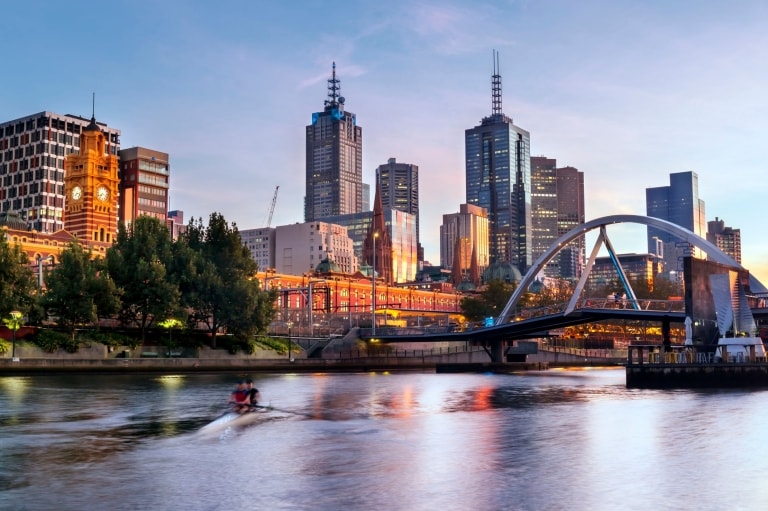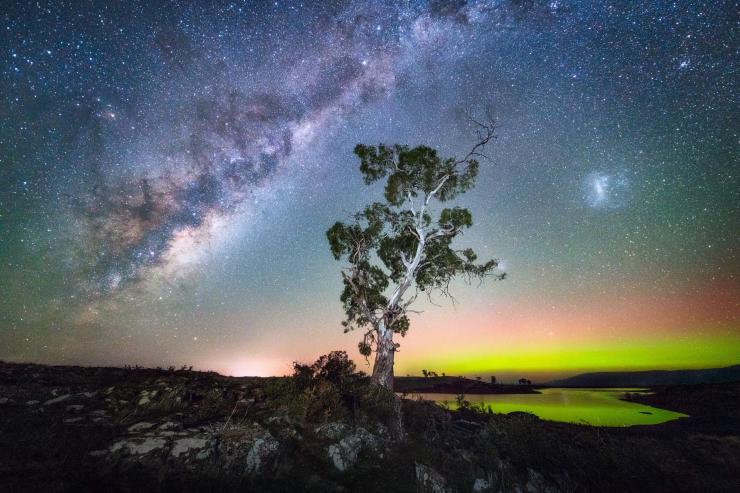Daylight saving begins at 2am, Eastern Standard Time, on the first Sunday in October and ends at 3am Eastern Daylight Saving Time on the first Sunday in April. During this time Melbourne moves to Australian Eastern Daylight Time (AEDT), UTC +11.

Weather in Melbourne
Find information on temperature, rainfall and seasonal activities to help plan your holiday in Melbourne.
What is the average temperature in Melbourne?
Melbourne may be known for its fickle weather - the city has been described as having four seasons in one day - but it can still be enjoyed all year round. Plan ahead with this information on temperature and rainfall.
Summer (December – February)
Melbourne warms up in summer with mean temperatures between 14 - 25.3°C (57.2 - 77.5°F). These months are dry, with occasional hot spells that can last more than three days. Melbourne’s top temperatures are usually in January and February, when temperatures can occasionally soar past 30°C (86°F).
Autumn (March – May)
Autumn sees cooler weather with average temperatures ranging from 10.9 – 20.3°C (51.6 - 68.5°F). Morning fog usually clears to welcome fine, sunny days, however toward the end of the season there can be extended periods of light winds.
Winter (June – August)
In winter, average temperatures range from 6.5 - 14.2°C (43.7 - 57.6°F), and snow falls in the north-east of Victoria, known as High Country. The weather is frequently cold and cloudy, and nights can be accompanied by frosts. Heavy rain is rare at this time of year.
Spring (September – November)
During spring average temperatures range from 9.6 - 19.6°C (49.3 - 67.3°F). The season is known as the most variable of the year, when weather can quickly change from calm and sunny to cold and windy. Pack your umbrella – October is the wettest month with roughly 10 days of rainfall.
Frequently Asked Questions about the weather in Melbourne
Seasonal weather in Melbourne
SUMMER
| Weather Categories | Dec | Jan | Feb |
|---|---|---|---|
| 24.2 76 | 25.9 79 | 25.8 78 | |
| 12.9 55 | 14.3 58 | 14.6 58 | |
| 59 | 48 | 48 | |
| 11 | 8 | 8 |
AUTUMN
| Weather Categories | Mar | Apr | May |
|---|---|---|---|
| 23.9 75 | 20.3 69 | 16.7 62 | |
| 13.2 56 | 10.8 51 | 8.6 47 | |
| 50 | 58 | 56 | |
| 9 | 12 | 15 |
WINTER
| Weather Categories | Jun | Jul | Aug |
|---|---|---|---|
| 14 57 | 13.4 56 | 15 59 | |
| 6.9 44 | 6 43 | 6.7 44 | |
| 49 | 48 | 50 | |
| 15 | 16 | 16 |
SPRING
| Weather Categories | Sep | Oct | Nov |
|---|---|---|---|
| 20.5 69 | 22.5 73 | 24 75 | |
| 10.3 51 | 13.1 56 | 15.3 60 | |
| 61 | 72 | 81 | |
| 15 | 14 | 12 |

































































































































